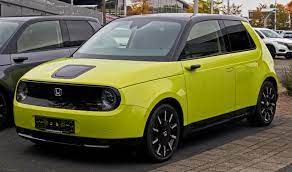Ultra-low emission vehicles now account for over half a million cars on British roads, as more drivers make the switch to zero-emission motoring.
The statistic that over half a million ultra-low emission vehicles are being driven reveal the UK is accelerating towards cleaner transport.
Data from the Society of Motor Manufacturers and Traders (SMMT) shows 13.6 per cent of new cars sold in the past 4 months had a plug, with ultra-low emission cars making up 1 in 10 sales in 2020, in increase of 33.3 per cent from the year before.
This figure has been released ahead of the UK hosting COP26 in Glasgow in November of this year. The UK aim to be at the forefront of the ‘electric vehicle revolution’, following the Government’s commitment to end the sale of new petrol and diesel cars by 2030.
‘As hosts of COP 26, we want to drive decarbonisation on the global stage, which is why we are going further and faster to make the journeys of our future as clean as possible,’ Grant Shapps, Transport Secretary, commented.
‘With news that the half-a-million milestone has now been met, together with the UK now having the second largest EV market in Europe, it is clear that the shift to green motoring is accelerating at speed.’
UK government has pledged £2.8 billion package of measures to support industry and drivers to switch towards cleaner vehicles.
Currently, the UK has a network of over 23,000 public chargepoints, however a total of 400,000 public chargepoints will be required in order to support the switch to electric by 2030.
Government has committed to provide £1.3 billion over the next 4 years to rollout chargepoints on motorways, major A-roads, in businesses, on-street and in homes. This funding comes from a wider £2.8 billion package of measures to support industry and drivers to make the switch to cleaner vehicles.
Mike Hawes, SMMT chief executive, stated: ‘The automotive sector is transforming the way we drive, investing billions in ever greener and cleaner vehicles across the range, with 1 in 4 available models now capable of being ‘plugged in’.’
Photo Credit: Wikimedia Commons




